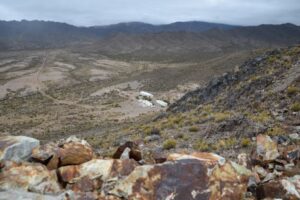
The Northeast region of Brazil is about to receive an investment of R$127 billion to boost the production of green hydrogen, positioning itself as a future powerhouse in the global clean energy scenario.
Mega investment coming to the Northeast: Brazil’s Northeast region is at the center of a global energy revolution with a clear focus: the production of green hydrogen, considered the fuel of the future. Among the states leading this race is Rio Grande do Norte, which recently announced a massive investment of R$127 billion to develop projects aimed at producing green hydrogen (H2V). With the potential to generate more than 30 new jobs and attract billions in investment, the Northeast is poised to establish itself as a global powerhouse in the production of this innovative fuel.
Companies and investor consortia have expressed intentions to invest R$ 127,8 billion in new ventures in the Northeast region of Brazil. In total, 246 proposals were submitted under the Northeast Call for Proposals. A program coordinated by financial development institutions to accelerate the industrialization of the region and aligned with the guidelines of the New Industry Brazil (NIB).
Companies are vying for a R$10 billion share of the Northeast Call for Proposals, and interest 13 times greater exposes the region’s economic strength.
The movement that has been repositioning the Northeast on the map of major investments in Brazil gained a new chapter this week. The Northeast Call – a credit initiative that brings together Banco do Nordeste, BNDES, Caixa, Banco do Brasil and Finep – received a flood of business and corporate projects, totaling a requested amount. almost 13 times higher than the initial projected limit of R$ 10 billion..
— ARTICLE CONTINUES BELOW —
The final result will be announced on November 28th. After that, a crucial stage begins: the structuring of the… Joint Support Plans (JSP), which must be completed by January 15th of next year.
Overall, the initiative seeks to finance and accelerate structuring projects focused on innovation, productive infrastructure, technology, energy, industry, and socioeconomic development, consolidating the region as one of the most dynamic centers of the national economy.
And the numbers reinforce this historic turnaround.
According to Aldemir Freire, Planning Director of Banco do Nordeste, the appetite of companies confirms an irreversible trend:
“The total value of the submitted projects represents almost 13 times the initially projected credit. This volume of demand shows how the Northeast region is generating great interest from companies, as we have a consumer market, clean energy infrastructure, a workforce, and we are growing faster than the rest of the country,” he highlighted.
More than just access to credit, the Northeast Call symbolizes a strategic shift in Brazil: the reshaping of the national economic geography.
The region already boasts some of the world’s largest renewable energy hubs – wind, solar, and now green hydrogen – and attracts entire industrial chains linked to the sector, such as technology, metallurgy, machinery, logistics, and energy storage.
Furthermore, states such as Ceará, Pernambuco, Bahia, and Rio Grande do Norte are making progress in:
Strategic port and logistics zones
Industrial chains linked to clean energy.
Technological innovation complexes
Modern industrial parks
Agro-industrial and biotechnology expansion
Urban and housing infrastructure projects
Finep, linked to the Ministry of Science, Technology and Innovation, joins the effort with lines focused on innovation and research, while the Northeast Consortium and Sudene support the technical and strategic coordination of the process.
Investment, technology, and a vision for the future: why companies are betting big.
The Northeast is experiencing its most favorable period in decades. The combination of:
Clean energy infrastructure
Public and private incentives
More robust regulatory environment
Workforce qualification
Large regional consumer markets
Economic growth above the national average.
It creates a clear business environment: the future of Brazilian development lies in the Northeast. The business sector has seen this opportunity and is positioning itself aggressively.
If the submitted projects are approved and funded over the next few months, the multiplier effect on employment, income, and industrialization could mark a new phase in Brazilian development.
What’s next?
Until November: analysis and selection of finalist projects.
Until January 2026: structuring of plans and release of the first strategic guidelines.
The challenge now will be to monitor how resources will be allocated, which sectors will lead the transformation, and which states will take the lead in the race for innovation and sustainable industrialization.
Everything indicates that Brazil’s economic map is changing – and the Northeast is leading the way.
Rio Grande do Norte as a leader in the production of green hydrogen and its ideal conditions
Rio Grande do Norte, already known as the largest producer of wind energy in Brazil, is at the forefront of a new wave of development with green hydrogen. The state has a perfect combination of natural resources and infrastructure that puts it in an advantageous position to lead the production of the fuel of the future. In addition to abundant wind energy, the state also has a large availability of water, both essential for H2V production.
Currently, at least six projects are under development in the state, with the potential to generate 5 GW of clean energy. Three of these projects are already in the environmental licensing phase, which represents an important step towards transforming Rio Grande do Norte into a global hub for green hydrogen production.
This progress is largely due to the collaboration between the state government and the private sector, which is already attracting investments from international companies such as the German Nordex and the Spanish company Acciona.
The impact of the R$127 billion mega-investment in green hydrogen for the Northeast
With a total investment estimated at R$120 billion, Rio Grande do Norte stands out as a strategic hub for the production of the fuel of the future. According to the National Confederation of Industry (CNI) and the Secretariat of Economic Development of RN (Sedec), green hydrogen projects in the state have the potential to generate a total of US$20 billion in direct investments.
This puts Rio Grande do Norte at the forefront of a movement that could transform the region’s economy and create more than 30 new jobs in the coming years.
The Alto dos Ventos Industrial Complex in Macau is one of the main projects under development in the state. With an estimated investment of US$2,5 billion (around R$12,9 billion), This project is led by Nordex and Acciona, occupying an area of 10 hectares and with a production capacity of 1 GW of green hydrogen. This capacity places the project among the largest in the world and reinforces the role of Rio Grande do Norte as an emerging power in the production of the fuel of the future.
The crucial role of infrastructure in the flow of green hydrogen in the Northeast
The production of green hydrogen in the Northeast would not be possible without the development of a robust infrastructure that allows the flow and transportation of the fuel. In this context, the Industrial Port, which is being made possible by the government of Rio Grande do Norte, plays a fundamental role. The port will be crucial for the transportation of green hydrogen produced in the region, facilitating its export to international markets.
Furthermore, the state is working to develop the necessary regulations to support the growth of this sector.
A Legislative Assembly of the RN (ALRN) is preparing a regulatory project for the green hydrogen production environment, while the National Congress has already approved the Legal framework for hydrogen production, creating a favorable regulatory environment to attract more investments. These measures are essential to ensure that green hydrogen becomes a central part of Brazil’s energy matrix.
The impact of green hydrogen on creating new jobs in the Northeast
One of the most promising aspects of investing in green hydrogen in the Northeast is the positive impact it will have on job creation. H2V production projects are expected to generate more than 30 new direct and indirect jobs, opening up opportunities in a variety of areas, from engineering and technology to logistics and project management.
This new demand for qualified labor is being met by initiatives such as the Center of Excellence in Professional Training for Green Hydrogen, opened in February of this year in Rio Grande do Norte.
This center is the first in Brazil to offer specialized training for professionals who want to work in the production of green hydrogen. Under real operating conditions, students learn everything from the generation of renewable energy to the production and practical application of green hydrogen. This training is essential to ensure that Brazil has the human resources necessary to stand out in the global green hydrogen market.
The future of green hydrogen in the Northeast and the transition to the fuel of the future
Green hydrogen is fast becoming one of the most promising solutions for reducing greenhouse gas emissions. Brazil, with its abundance of renewable resources, is well positioned to become a global leader in the production of this fuel of the future, and the Northeast, in particular, is leading the way in this movement.
States like Ceará, Piauí, and Bahia are also investing heavily in the development of green hydrogen projects, with Ceará leading in the number of ongoing projects, totaling 27 initiatives.
However, Rio Grande do Norte continues to stand out for its pioneering spirit and the infrastructure already under development to support H2V production.
With investments that could reach US$90 billion across the Northeast region, green hydrogen promises not only to transform the local economy, but also to put Brazil on the global map as one of the main exporters of this clean and sustainable fuel.
By making this transition to the fuel of the future, Brazil will be making a significant contribution to the fight against climate change, while also generating new jobs and opportunities for regional development.
The Northeast as a global protagonist in the production of the fuel of the future
The investment of over R$ 120 billion in green hydrogen production in the Northeast, especially in Rio Grande do Norte, is a clear demonstration of the region’s potential to lead the clean energy sector.
With abundant natural resources, a developing infrastructure and the support of large international companies, the Northeast is positioning itself as a world power in the production of the fuel of the future.
The creation of more than 30 new jobs underscores the importance of this investment not only for the local economy, but also for the global energy transition. As green hydrogen becomes a central piece in the fight against climate change, Brazil’s Northeast is poised to play a leading role in producing this fuel that promises to revolutionize the energy sector.





